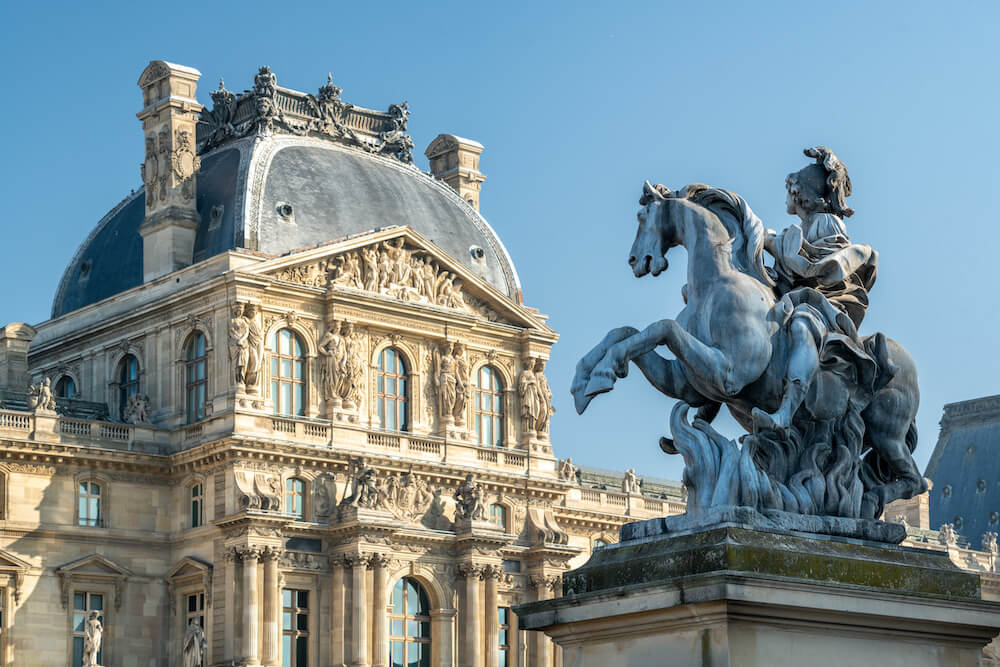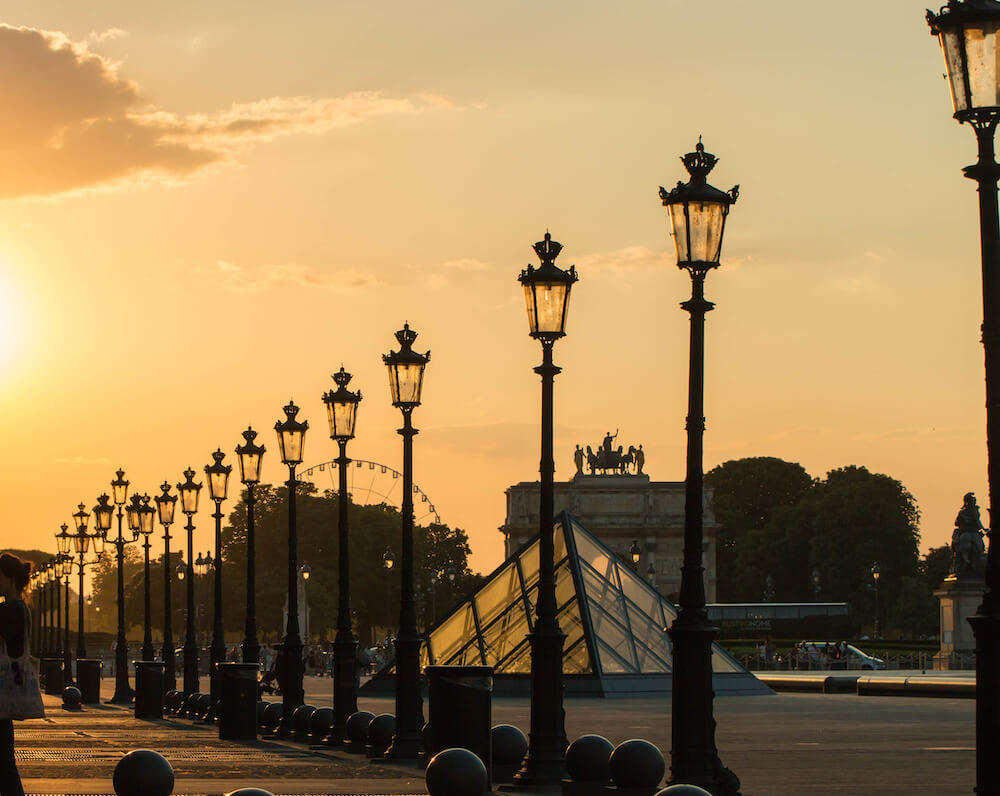The Louvre museum is one of our favorite locations in Paris to tour with our clients, which is why we are dedicating this post to a little history and fun about one of France’s most historical and fascinating museums.
The Louvre Museum in Paris is considered one of the most prominent museums in the world! It is so large that it is inhumanely possible to see all the works of art in one visit. You could see everything in 100 days if you spent only 30 seconds per piece! There are 380,000 pieces in total to feast your eyes upon!

Once a palace to some of France’s most famous royalty, the museum now attracts over 15,000 visitors per day, 70% of which were not French.
The original building was built in 1190 to act as a fortress. Philippe Auguste decided to erect a fortified enclosure to protect Paris. It was his gesture of safety to the city before he left to fight in the crusades, but in the 16th century, it was turned from a fortress into a home for the kings. It was only in 1793 that the French Monarchy moved to the Palace of Versailles. When this move was made, the palace opened its doors to the public and hosted only 537 paintings.
At one point Napoleon renamed the Louvre to Musée Napoleon and expanded its collection by 5,000 pieces. The pieces were, however, returned to the original owners when the military leader was defeated. Furthermore, Napoleon took it upon himself to hang the Mona Lisa in his private bedroom! This was the first time the piece was ever hung on a wall. Leonardo da Vinci’s Mona Lisa is unmistakably one of the most famous pieces of art in the Louvre.
What you may find surprising about her, is she is quite small, measuring to about the size of an A2 piece of paper. The Mona Lisa is now protected by bulletproof glass and guards but did take a little trip when she was stolen in 1911, and then found and returned just 2 years later. The Louvre’s galleries are displayed nearly 15 acres of wall space. The galleries contain approximately 7,500 paintings, and French artists created 66% of them.

• Near Eastern Antiquities
• Egyptian Antiquities
• Greek, Etruscan, and Roman Antiquities
• Islamic Art
• Sculptures
• Decorative Arts
• Paintings
• Prints and Drawings
With all this artwork it would be incredibly easy to get lost inside the Louvre’s winding corridors and stretched hallways. We love to take our clients on two-hour private tours of the Louvre, we include stops at:
• The medieval passageway
• The Great Sphinx of Tanis
• Venus de Milo
• The Renaissance Ballroom
• Winged Victory and the Apollo Gallery
• Masterpieces of the Italian Renaissance by Botticelli
• Fra Angelico, Raphael, da Vinci, and Michelangelo
• Key works by 19th century French masters Delacroix, Gericault and Ingres
During the 2-hour tour, we also study Dutch and Flemish masters Rembrandt, Ruysdael, Vermeer, and Rubens, and visit the Napoleon III apartments. With each work of art, you will learn a little piece of history. The best part of the visit is the fact that you can avoid being lost and bored by the excellent guidance of our personable guides.

Our favorite section of the museum would include the Napoleon Apartments, which is a section which often sadly is missed by the average visitor because it is located at the very end of one of the most extended wings of the museum.
The Napoleon III Apartments are an exceptional record of Second Empire decorative art. You will not be disappointed by how bright and gorgeous these rooms are. It’s almost as if you are visiting the Versailles Chateau in Paris. Rooms full of gold and red, beautiful furniture, ornate ceilings, and fine statues.
“The rooms today known as the Napoleon III apartments were refurbished during the Second Empire for the Ministry of State. They were part of that then brand-new wing of the Louvre built between 1852 and 1857 by the architects Louis Visconti (1791-1853) and later Hector-Martin Lefuel (1810-1882) to link the Louvre and Tuileries palaces. The work was overseen by Lefuel between 1856 and 1861, under the supervision of Achille Fould, Minister of State. Lefuel recruited a large team of artists, skillfully coordinating their work. The reception rooms, sumptuously designed in the Louis XIV style, have retained their original decoration and furniture. The private apartments are situated on either side of the main staircase. After the Paris Commune in 1871, these rooms were allocated to the Finance Ministry.”
Comment (0)